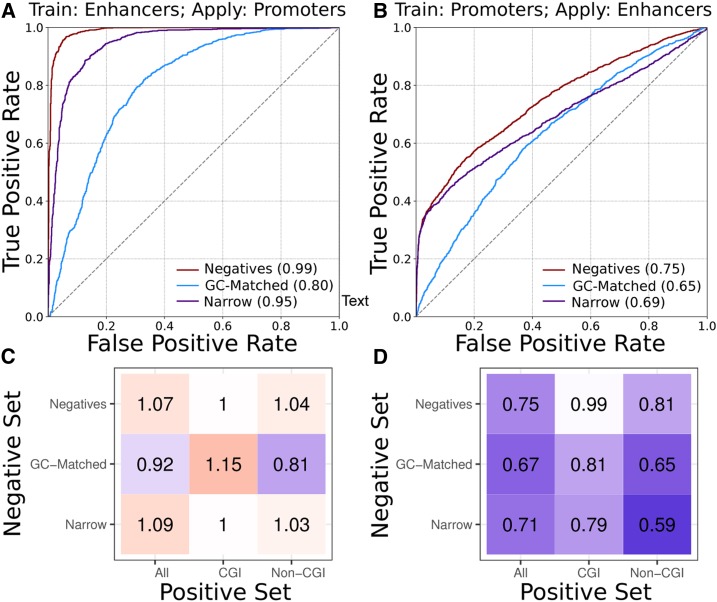Figure 3.
Classifiers trained on enhancers can accurately predict promoters and their breadth of activity, but not vice versa. (A) ROC curves for classifiers trained on enhancers and then used to classify promoters. (B) ROC curves for classifiers trained on promoters and then used to classify enhancers. Classifiers were trained using broadly active regions as positives and genomic background regions (red, “Negatives”), GC-matched background regions (blue, “GC-Matched”), or narrowly active regions (purple, “Narrow”) as negatives. PR curves are given in Figure S5. (C and D) Relative ROC AUCs (AUCpred/AUCtraining) for cross-region classifiers predicting promoters and enhancers reveal that enhancer-trained classifiers (C) generalize well to promoter prediction tasks, but the promoter-trained classifiers (D) do not. The superior generalization of the enhancer classifier held when regions with and without CpG islands were analyzed separately. ROC and PR curves for (C and D) are in Figure S6. AUC, area under the curve; CGI, CpG island; PR, precision recall; ROC, receiver operator characteristic.

